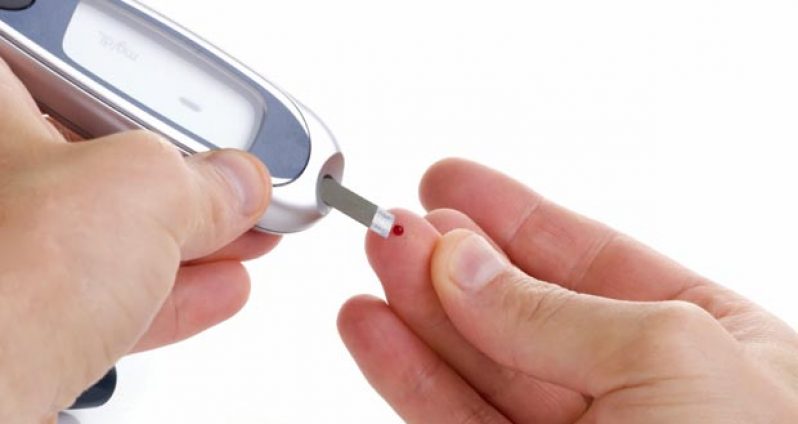The bad news is that diabetes is incurable – medical science has yet to find a cure for one of the world’s most common and dangerous illnesses. The good news is that diabetes is treatable and with proper care and self-management, most people with diabetes can live normal and healthy lives. Until a cure comes along for diabetes, the key is treatment-provided by your doctor and yourself. The following are some common questions and answers people have. Q: What is Diabetes?
A: Diabetes is a malfunction in the body’s ability to convert carbohydrates (sweet and starchy food such as fruit, bread and vegetables) into energy to power the body. The medical name for this is diabetes mellitus, meaning “honey-sweet diabetes”. As you might gather from such a name diabetes is characterised by an abnormally high and persistent concentration of sugar in the bloodstream. Other characteristics are sugar in the urine, excessive urine production and unusual thirst, hunger and weight loss. People affected with diabetes generally require lifelong medical care to control the disease.
Q: Why are carbohydrates a problem?
A: The process of converting food into energy is called metabolism and diabetes is often called a metabolic disorder. In a normal body, carbohydrates are converted to glucose and other simple sugars in the stomach and small intestine. Glucose moves from thee organs into the veins. The blood circulate glucose through the body where it liver, muscle and goes to the liver, muscle and fat cells, either to be stored for later use or to be used immediately as energy. Thus glucose enters body cells powering the muscles, heart and brain and assisting the body in maintaining a constant temperature. A body of a person with diabetes also converts carbohydrates into sugars and sends them into the blood. But at this point the system comes to a crashing halt: The glucose is unable to enter the cells.
Q: Why not?
A: The answer has to do with insulin, a hormone that enables the body to burn carbohydrates.
Q: Insulin? Where does that come from?
A: It comes from the pancreas – a six-inch long gland that is located behind the stomach. In healthy people the pancreas, secrete many fluids including insulin. However in a person with Diabetes, one of two things happens: No insulin – or not enough insulin is produced by the pancreas or what the pancreas is not working properly.
Q: So insulin is important?
A: Absolutely. That one hormone enables the cells to absorb glucose for use as energy. Without it, a “glucose glut” eventually results – high levels of unused blood sugar are trapped in the blood stream.
Q: So what’s wrong with high blood sugar?
A: As sugar build in the bloodstream, the kidneys try to pump it out. To eliminate the sugar the kidneys must dissolve it. The more sugar to be eliminated, the more urine must be passed.
You can see how this situation quickly leads to excess urination, increased thirst and dehydration – three of the symptoms of Diabetes. Although the kidneys effectively keep the body from being overrun with sugar, working double-time wears out the kidneys sooner than normal. Over a lifetime such overwork eventually brings on kidney failure. But that’s not the only problem with High blood sugar.
Q: What’s the other?
A: At the same time that the kidneys are furiously flushing the system of sugar, the body is seriously low on fuel. The body’s cells, unable to burn sugar, begin to use protein and body fat as a source of energy. This breakdown of fats for fuel releases toxic acids called ketones. Some ketones are excreted through the urine. Eventually however the ketones accumulate and at high levels they can lead to a condition called ketoacidosis, which is in effect a poisoning of the system. In extreme cases ketoacidosis can cause unconsciousness –what some people call a Diabetic coma, if left untreated ketoacidosis can kill.
Q: What can happen if Diabetes goes unchecked?
A: Diabetes hastens the wear and tear on many crucial body functions. In particular it attacks:
. The Circulatory System. Diabetes leads to coronary heart disease, stroke and circulation problems in hands and feet. Heart attacks, hardening of the arteries, strokes, poor circulation in hands and feet, amputations – these are common examples of Diabetes damage.
. The Kidneys. Diabetes is the leading cause of end stage kidney disease.
. The Eyes. Diabetic eye disease, or diabetic retinopathy, is the major cause of new vision loss
. The Nervous System. Nerve cells may be damaged causing severe pain or loss of feeling – a condition known as neuropathy.
Next Week: Type 1 and II Diabetes
Written By Michelle Gonsalves



.jpg)








